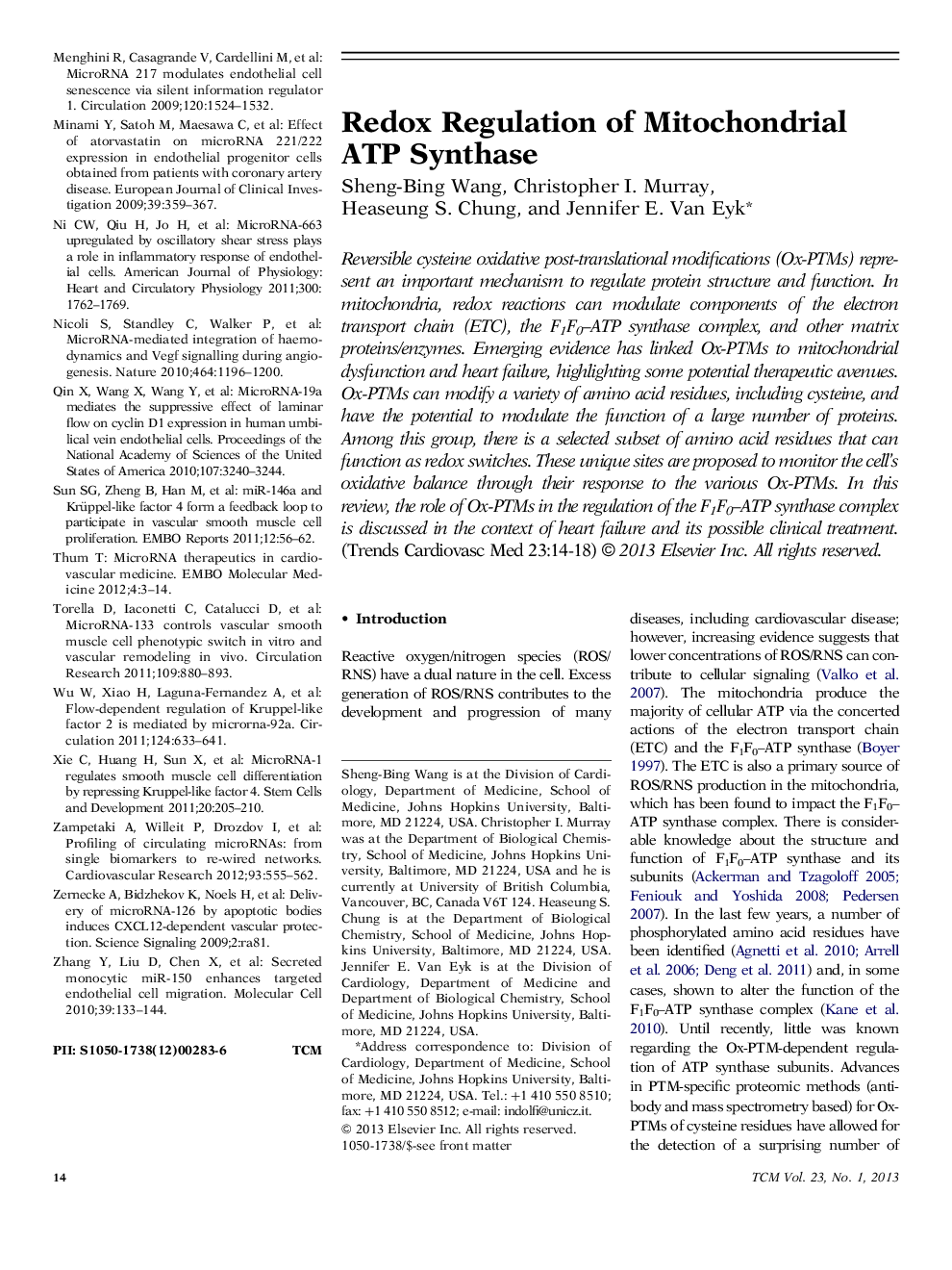| Article ID | Journal | Published Year | Pages | File Type |
|---|---|---|---|---|
| 3030563 | Trends in Cardiovascular Medicine | 2013 | 5 Pages |
Reversible cysteine oxidative post-translational modifications (Ox-PTMs) represent an important mechanism to regulate protein structure and function. In mitochondria, redox reactions can modulate components of the electron transport chain (ETC), the F1F0ATP synthase complex, and other matrix proteins/enzymes. Emerging evidence has linked Ox-PTMs to mitochondrial dysfunction and heart failure, highlighting some potential therapeutic avenues. Ox-PTMs can modify a variety of amino acid residues, including cysteine, and have the potential to modulate the function of a large number of proteins. Among this group, there is a selected subset of amino acid residues that can function as redox switches. These unique sites are proposed to monitor the cell’s oxidative balance through their response to the various Ox-PTMs. In this review, the role of Ox-PTMs in the regulation of the F1F0ATP synthase complex is discussed in the context of heart failure and its possible clinical treatment.
